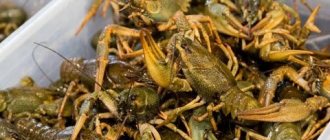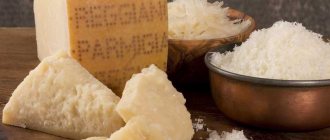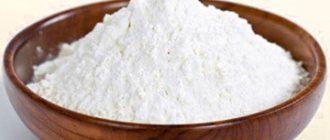There should always be matches, flour and salt in the house. That's what wise people say. And in fact, almost every housewife has a supply of flour, and it is not at all necessary that she be a lover of baking. But not everyone knows and follows the storage rules, and therefore a variety of living creatures are regularly introduced into the product. How to store flour so that bugs do not settle in it, and what to do if insects do appear in it, will not hurt everyone to know.
Types, varieties and expiration dates according to GOST
The shelf life of wheat flour and storage conditions are regulated by the regulatory document GOST R 52189-2003 “Wheat flour. General technical conditions". It says that the shelf life is set by the manufacturer, based on the type and variety. High-quality products retain their properties for 6 to 8 months. The higher the quality, the longer it is stored.
If we talk about other types of flour, then the specific contents are regulated by GOST 26791-89 “Grain processing products. Packaging, labeling, transportation and storage." It follows from this that:
- the properties of rye flour remain unchanged for 4-6 months;
- corn and soybean non-deodorized – 3-6 months.
- deodorized soybean – up to a year.
There are a great variety of flour milling products. It is produced both from cereals and from seeds (pumpkin), fruits (chestnut) and dried berries (bird cherry)
Shelf life of different types of flour
Flour, depending on the variety, is stored from 2-3 months to several years. I offer a cheat sheet for housewives, be sure to keep it for yourself.
How long can flour be stored?
| Variety | Shelf life in months |
| Wheat baking | 6-8 |
| Wheat pasta | 8-12 |
| Rye | 4-6 |
| Krupchatka | 12-18 |
| Top grade | 12 |
| First grade | 12 |
| Second grade | 10-12 |
| Wallpaper | 4-6 |
| Ripped off | 4-6 |
| Seeded | 3-5 |
| Corn | 10-24 |
| Pea | 12-16 |
| Oatmeal | 8-10 |
| Soy | 6-9 |
| Rice | Up to 10 years |
| Buckwheat | 1-3 |
| Tapioca | 1-3 |
| Peanut | 2-6 |
| Sorghum | 4-6 |
| Coconut | 3-6 |
| Linen | 8-24 |
| Barley | 10-18 |
| Almond | 2-4 |
The difference in terms depends on storage conditions. The lower the humidity level, and the less oxygen available, the longer the flour can be used.
What to look for when purchasing
Package
If you buy packaged flour, then the first thing you need to pay attention to is the marking or label. Often the label is attached to bags rather than paper bags.
Labeling must contain information:
- about the variety;
- manufacturer;
- date of manufacture;
- terms and conditions of storage.
Flour is packaged in paper bags or sacks. In any case, the packaging must not be damaged. The quality of the product depends on its integrity. If stored improperly, bags and sacks may become wet or damp. It's easy to check. Run your hand over the entire surface of the packaging container. It should be dry, without streaks or diaper rash.
Organoleptic indicators
If we talk about the taste and other qualities of flour, then pay attention to:
- Smell. Flour should not smell musty, damp or rotten. A sour smell is a sign of spoilage.
- Taste. Before purchasing, you should taste the product. Firstly, it should not crunch on your teeth. Secondly, if the product is of high quality, then it has a pleasant and sweet taste.
- Consistency or structure. To check flour products, remember them in your hands. If you hear a quiet crunch during this movement, this indicates its high quality and dryness. If, after squeezing, the lump holds its shape, this is a sign that the product is damp.
- Color. It must match the type and type of product you purchased. You can check this indicator with a few drops of water. If you add liquid to a handful of flour, the quality product will not change color. If a reddish or bluish tint appears, it means that the raw material contains bran or unripe grains.
What color should this or that variety be?
How to determine that bugs have appeared
Signs of the presence of uninvited “guests” in flour can be different. At the stage when insects are already visible to the naked eye, you don’t even have to try to save the product. Even if all pests are destroyed, the flour will have an unpleasant taste and smell. After that, it will only be suitable for animals, and even then not always.
The following types of insects can infect stocks:
- bread grinders. These bugs “move” into the house from bakeries and bread factories where sanitary and hygienic standards are not observed. They enjoy eating biscuits, gingerbread, crackers, and bread, and when the “family” gets bigger, they begin to eat flour and other foods nearby. Over time, they spread throughout the house and begin to eat indoor plants, clothes, curtains and even books. You can determine the presence at the initial stage by regularly inspecting the windows. These insects love light very much and constantly fly towards it. They are similar in appearance to fruit flies, only much smaller;
- red mucoed. This beetle also enters the home from factories, stores, grain warehouses and mills. It spreads very quickly and also destroys supplies, but only if the house is humid. It does not eat dry food, so if you follow the rules for storing flour, you don’t have to worry about such an attack. Even if the pest gets into the house, it will quickly die due to the lack of suitable nutrition;
- flour beetle This is the most dangerous and most common creature for flour and other food supplies. They love flour, semolina, and starch most of all, but over time they can also affect other grains. The bugs are up to 4 mm in size and have a brown-golden back;
Foods affected by flour beetles are dangerous to eat. They can cause allergies and very severe poisoning.
- food moth. This pest multiplies very quickly and destroys food. Starts with dry ones, and then moves on to all other stocks. It is very difficult to remove the insect. Moths multiply too quickly.
In order to timely determine the presence of pests, it is necessary to regularly inspect the flour itself, the place of its storage, and the entire room. You should start worrying if not only bugs appear in the flour, but also lumps or cobwebs, if small wet spots, crumbs of unknown origin form on the walls and shelves, as well as small midge corpses on window sills and other surfaces.
How to store at home
Storing flour at home must meet all the requirements specified by the manufacturer on the product packaging. It is important to consider several points at once:
- humidity and air temperature;
- cleanliness of the premises;
- selection of containers;
- precise control of expiration dates.
It is important for a good housewife to choose the right place and container in which the flour will be constantly kept. If the product sits at home for a long time, its quality must be checked periodically.
Conditions
To prevent the flour from spoiling, monitor the temperature and humidity. The temperature should not be higher than 25 °C. The closer it is to 5 °C, the less likely it is to spoil.
If it is possible to place flour in rooms where the temperature is closer to zero, then the shelf life of the product increases. Such an environment may be in the basement or pantry, but it is important to take into account the humidity of the air. It should not be higher than 70%. The higher this indicator, the faster the flour will disappear.
Note to the hostess
It is absolutely wrong to keep flour in the refrigerator, as there is moisture there that can spoil the product.
Place
The shelf life of flour directly depends on the room where it is located. At home, the best places for her would be:
- pantry;
- lumber room;
- basement;
- balcony;
- separate closet with lockable doors;
- lower shelves, closer to the floor, in the kitchen.
All these rooms must be well ventilated. Air needs to circulate. Additionally, it is recommended to check the humidity parameters.
If you are going to store flour in the kitchen, choose a place for it closer to the floor. High temperatures, vapors rise to the ceiling, so the top shelves are not suitable.
Any grain products should not be exposed to light. It is better to keep the product in a dark place or in a light-proof container
Tara
How to store flour? Most often it is sold in paper bags. If you do not have a suitable container to pour the product into, you can also leave it in the original paper packaging. The main thing is to carefully close the bag using a paper holder or clothespin. Air and moisture should not get into it.
It is better to pour the flour into a special container for long-term storage. Suitable for this purpose:
- canvas bag;
- tightly closing plastic container;
- glass jar with lid.
The main thing is that no moisture gets into the product. If the container does not close hermetically, it is important to check the flour from time to time, since pests may grow in it.
Tip of the day
Periodically wipe the shelves where the flour is kept with a weak solution of vinegar or laundry soap.
Why do bugs appear in flour?
Often thrifty housewives one day discover various living creatures in flour. This product is to the taste of many bugs: flour beetles, weevils, bread borers, Suriname flour beetles, and food moths.
Insects, migrating, look for better living conditions. Many bugs, attracted by the light, fly into the window and choose cereals or flour as their place of residence. Adults can get home with food from a store where it was stored in unsanitary conditions.
How to avoid it
To get rid of living creatures in flour, you need to resort to a whole range of measures:
- First of all, everything should be thoroughly cleaned and washed. Cleaning is done in all kitchen cabinets, shelves, and drawers.
- After all the scattered cereal has been collected and the surface has been cleaned, you can begin processing.
- 9 percent vinegar is diluted with water (proportion 1:1). All horizontal and vertical surfaces are treated with this composition. Vinegar will destroy adults, larvae, and eggs.
- Baking soda can be a substitute for vinegar. Two tablespoons of salt are dissolved in warm water (1 liter), everything is mixed well.
- Storage containers also need to be treated. Glass and plastic containers are thoroughly washed and scalded with boiling water.
- Fabric bags are washed and boiled.
- You can resort to pyrethrum by spraying it in your cabinets.
Optimal temperature and humidity indicators and properly selected containers will help preserve the beneficial properties of flour for a long time, prolonging its shelf life, providing the table with delicious and fluffy baked goods.
Rate this post
How to store flour without getting bugs
When stored at home, insects appear if the product is not used for a long time or if it is kept in conditions favorable to bugs.
To prevent pests, use old fashioned methods. Place 2-3 cloves of unpeeled garlic in a container for 2-3 kg of flour. It releases aromatic substances that repel bugs. Also suitable for these purposes:
- dry cloves;
- calendula flowers;
- Bay leaf.
Place the plants in a piece of gauze and tie them tightly so that they do not spill out.
Insect protection
There are old, time-tested methods of protecting against insects that love to live in flour.
- If you plan to use cotton bags for storage, then before pouring the flour into the bag, soak it in a concentrated salt solution (3 tablespoons per 1 liter of water) and dry it well (no need to rinse in clean water). The salt will repel moths and bugs, and the flour will be safe.
- The most affordable way to protect against pests is to put a few unpeeled cloves of garlic in the flour. Use 2 slices per 1 kg. flour. Volatile substances (phytoncides), which garlic contains in large quantities, effectively repel insects.
- There is another method of combating flour bugs - dried calendula flowers. Calendula is poured into a large bag, into which a smaller bag of flour is placed. This way the flowers will not get into the flour and will repel insects.
- Bay leaves will help repel pests. Interestingly, having a pronounced odor, it will not harm the flour.
- A modern way to protect flour supplies from visits from uninvited guests is to use mint chewing gum. If you put several open packs of mint gum next to the bag, insects will not get into it.
- The shelf on which the bag of flour is stored should be treated with acetic acid once every 7 days.
- If it happens that pests have already settled in the flour, do not despair. It can be sifted through a fine-mesh sieve and poured again into another container. To ensure that all insects are killed, the flour can be placed in the oven. Heat treatment should be carried out for 10 -15 minutes at a temperature of +100°C.
- You cannot use a container in which pests have infested - they may come back again. Therefore, before reuse, the container is thoroughly washed and rinsed with a salt solution. After complete drying, the container can be reused.
Factors affecting the suitability of flour
Flour is prepared from various types of products. Most often from grain. Its characteristics are influenced by the following factors:
- gluten and type of original product;
- external storage conditions.
The bulk product is negatively affected by humidity and is susceptible to parasites and insects. Conservation conditions are usually understood as a whole set of factors:
- container material (preferably a paper bag);
- grinding index;
- temperature regime;
- air humidity;
- room ventilation;
- proximity to goods that have a strong odor (contraindicated).
Attention: in specialized premises, premium flour does not lose its nutritional qualities for ten years.
Flour is not supposed to be left on the counter for that long. Its shelf life is indicated on the packaging container and does not exceed two years.
What determines the shelf life of flour? The safety of the product is influenced by many factors:
- type of cereal;
- weather;
- grain moisture;
- storage conditions.
The last factor includes the following range of indicators:
- environmental humidity;
- indoor air temperature;
- containers used to store the product;
- grind size;
- presence of a ventilation system;
- the presence of strong-smelling substances near the flour.
If storage conditions are strictly observed, flour may not lose its quality for ten years.
Where to keep flour
For long-term storage in an apartment, places with low humidity and constant temperature are suitable. It can be:
- Kitchen cabinets.
Housewives usually use wall-mounted ones, but those that stand on the floor are much more suitable. Below, the temperature is usually 1-2 degrees lower and more stable.
- Pantry.
- Refrigerator shelf.
- A balcony or loggia is suitable for storing large supplies in winter, provided that they are glazed and insulated.
It is recommended to allocate a separate shelf for flour or place it away from vegetables.
Common Mistakes
Any housewife should remember:
- You should not buy a product that has expired, even if it is sold at a big discount.
- A plastic bag is a poor container for a product.
- If it is impossible to provide the proper conditions, you should not buy flour in large quantities.
Is it possible to use expired
To preserve your own health, you should not consume products that have expired. Flour is no exception. Violation of storage technology and expired use are fraught with the appearance of mycotoxins that can have a detrimental effect on the human body.
Potato stick leads to the development of endocarditis, peritonitis, meningitis, inflammation of the intestines, joints, gall bladder, food intoxication (poisoning with nausea, vomiting and disorder), allergic reactions. The use of such a product is strictly prohibited.
Storage conditions
To prevent bugs and mold from appearing, you need to remove the flour from the bag, pour it onto a baking sheet and fry it well in the oven for fifteen minutes. There is no need to return it to its original packaging. Flour is stored well in aluminum containers. If there is no oven, the bag of product can be placed in the refrigerator to freeze. High-quality flour is sometimes simply dried on paper in an apartment at room temperature.
Products purchased for future use must be constantly monitored. This is easy to do if you bring the process to automation:
- evaluate taste
- monitor the preconditions for temperature changes,
- periodically dry on paper,
- sift and pour into another container,
- If there are bugs, storage containers are washed with soda and dried thoroughly.
Temperature changes that could cause condensation to appear inside the jars should not be allowed. In such an atmosphere, insects breed faster.
Nuances with animal flour
Protein is required for complete nutrition of domestic animals and poultry. By processing natural waste from slaughterhouses and fisheries, a feed additive is obtained.
Fish
The basis is fish waste. Shelf life: 6 months at 18% fat, one year at less. Conditions of keeping: closed containers, inaccessible to animals.
A room with a temperature no higher than +30 °C, humidity no more than 75%. The biological content of the product does not allow storage in a hot room. After the expiration date, a putrid odor, caking of the product, and color change appear.
Meat and bone
Feed flour is an additive for animals and birds. Made from canned animal waste. Stored in original packaging, the opened part must be secured with clamps after use.
Can be placed in a closed container. The utility unit or warehouse must be well ventilated, dry, and have a temperature of up to +30 °C.
When overheated, the fat contained in flour decomposes, resulting in toxicity. Spoiled product should not be given to animals. The expiration date indicated on the packaging is 1 year.











